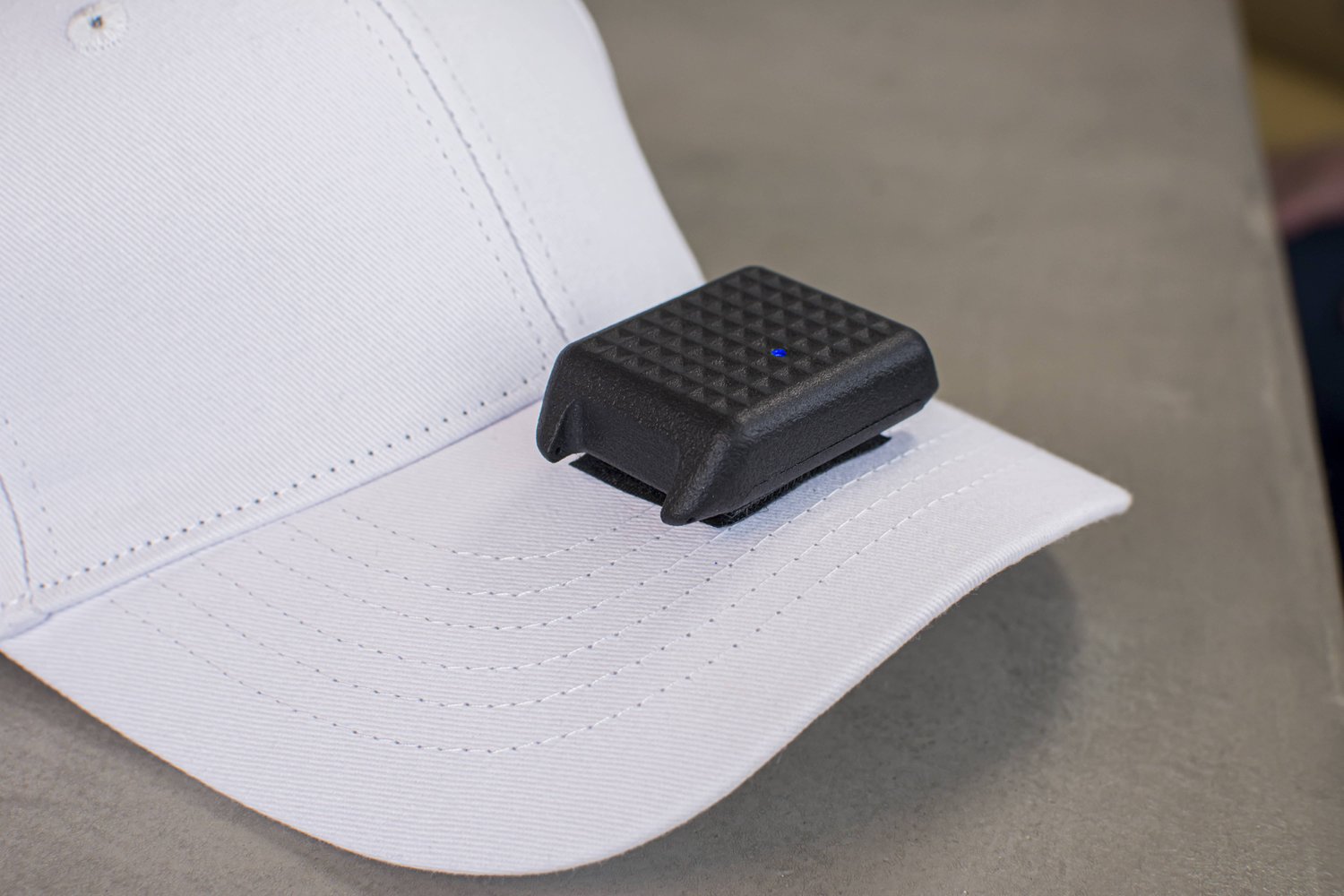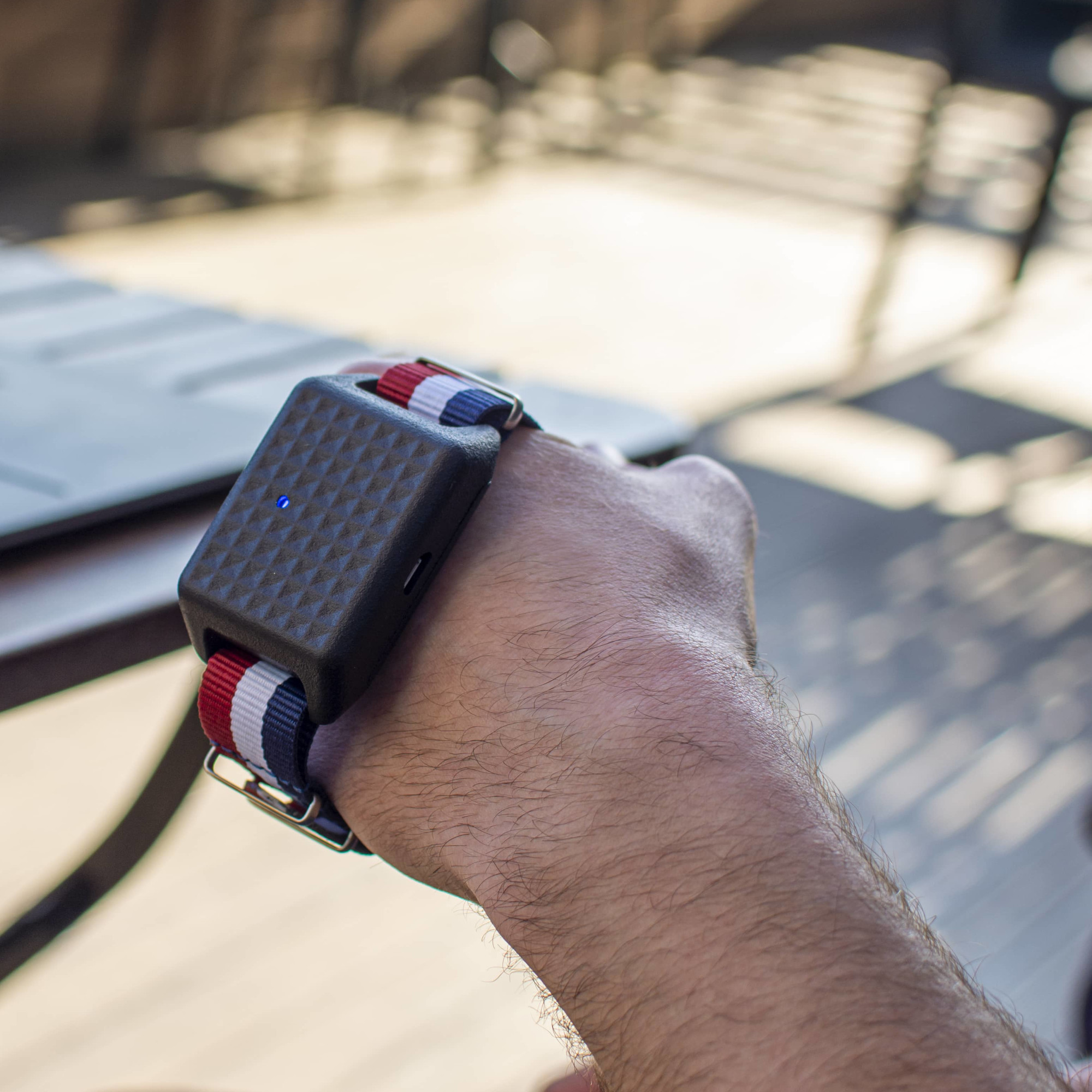Disabled entrepreneur Zhey Grudov – who suffers from Repetitive Strain Injury (RSI) – has recently launched his invention – Feathertail, a wearable ergonomic mouse. Feathertail is designed for people with dexterity impairments or RSI who have difficulty using a traditional mouse.
Feathertail is a lightweight, wearable air mouse. It looks like a watch and you can use it on your wrist, shoe or headset. It opens up a variety of ways to control your devices. It doesn’t require holding, unlike tabletop mice. It is moved in the air and the mouse click is performed through voice dictation, dwell to click software, or through a user’s preferred/existing switch controller.
We speak to Zhey Grudov to find out how he created the Feathertail, how it works, who can benefit from the device and his career background in technology.
Buy the Feathertail mouse on the Disability Horizons Shop

Can you tell us about your Repetitive Strain Injury (RSI), how it affects you and was it caused by an accident/illness or additional disability?
I worked an office job for a few years, until one day, which didn’t feel special in any other way, my hands began hurting. Over the following weeks, the situation worsened so much that I couldn’t even open the front door to my room without pain, let alone use a mouse.
I was in pain all the time. Exercises, doctors and other more outlandish therapies didn’t help. Eventually, that led me to resign from work, as I couldn’t find a way to continue to do my job without severe pain. Nowadays, several years down the line, I can do a lot of daily activities without pain.
Can you tell us about yourself and your career background?
I graduated with a degree in business from Aston University in Birmingham and upon graduation started working in IT consulting. Then, due to RSI, I had to resign from that job and worked in retail for about a year and a half to make ends meet, until the Covid lockdown. It was during that time that I began to work on Feathertail.
I enjoy your typical things, such as going for walks, spending time with friends and watching movies and shows. My favourite genres are fantasy and sci-fi.
I also really enjoy playing video games, so it was a bit of a shock when I had to stop due to my injury. Now with Feathertail, I’ve been able to play turn-based and strategy games again, which has been a lot of fun.
What inspired you to create the Feathertail and how did you make it?
Due to the severity of my condition, I couldn’t find a mouse I could use without pain. Traditional ergonomic mice still caused me a lot of discomfort, and mouth joysticks put a lot of pressure on my neck (I have an issue with that too), so couldn’t use them either.
I knew about motion controls, for example in the Nintendo Wii. I came across arduino, which is an open-source electronics prototyping platform. That got me thinking about making a dedicated ergonomic wearable mouse, which worked on similar principles and using that as a mouse.
During those first years of struggling with RSI, one of the most demoralising things was that I couldn’t find products or solutions designed for people like me. What I could find was usually really expensive, or didn’t work well. It felt like finding products to help you use a PC should be the easy part of dealing with RSI!
So when we got furloughed from work during the Covid lockdown, I began work on the project. There were many challenges to overcome – technical, financial and personal – but hopefully, we made something that other people will find useful.
How does the Feathertail work and which kind of impairments would it benefit?
You connect the USB dongle to your PC. Your computer will see the device as a regular mouse, so you don’t need to install any drivers.
Then hold, or attach the mouse in a comfortable way. For example, around the palm of your hand, or to a pair of headphones with the included sticky straps. You can then move the mouse around and the mouse cursor will follow your movement.

You can adjust the sensitivity of the device, like you would for any standard mouse.
There are several options for clicking the mouse. For example free dwell to click, or voice dictation software. Or physical foot pedals/buttons.
We have full tutorial videos on how to use Feathertail on our website.
Feathertail would benefit people who can’t use a traditional mouse, but still have some mobility in their hands, feet or head. For example, people suffering from RSI, or a dexterity impairment, such as arthritis, cerebral palsy and multiple sclerosis.
How do you make, sell and distribute the Feathertail and do you have assistants/employees/factory etc?
We’re a small team – myself, a marketing intern and 2 part-time engineers. Different components for the device are manufactured in various places around the world, such as China, Germany and the UK. The final device is assembled, tested and packaged in a workshop in west London
We are keen to keep involved in the process, so we can collect feedback and work to improve or adapt the product for people who might have different needs.
Are you planning to invent other accessible products in the future?
Yes! My struggle made me realise many more people could benefit from a product being designed to fit their needs and are currently being ignored by the market.
That was in part the inspiration behind the name of the company – Reasonable Electronics – we aim to make good products that solve a specific need, even if they’re not flashy and don’t have a huge marketing campaign behind them.
What advice would you give to other disabled entrepreneurs creating accessible products?
The process will probably cost a lot more than you think, and will take a lot more time than envisaged! Even simple things can sometimes take weeks and there will be many delays you can’t predict going into it.
That’s not said to discourage people from setting out to start a business. Get your prototype finished before quitting your job – if that’s how you’re making your income. Test the market and set up the infrastructure for the business before making radical life changes.
It’s a slower approach, but much safer and less hectic. Entrepreneurship can be very stressful and unpleasant, so anything that we can do to make the process go smoother is worth it in my opinion!
Make sure to research grants and advice available. There’s quite a bit out there. But do be aware that applying for some of these can take a lot of effort and time.
Find a cofounder if you can, it really helps. I went at it alone and it was one of my more impactful mistakes.
Set yourself realistic expectations, things will probably go wrong but that’s just the way of it! With persistence, creative problem-solving and some luck, it’s possible to make something happen!
You can buy the Feathertail – Ergonomic wireless wearable mouse for £141.60 (£118.00 ex VAT) on the Disability Horizons Shop.
To find out more about the Feathertail, visit the website and follow on Twitter @FeathertailZhey.
Interview by Emma Purcell
More on Disability Horizons…
- VAT exemption for disabled people: how it works and who is eligible
- Stroke survivor and PhD student invents an award-winning dyslexic ruler reading aid for neurodivergent people
- Ramble Tag guidance aid co-creator Tom Forsyth speaks to Disability Horizons
- Review of the Trabasack Max wheelchair bag and lap tray

